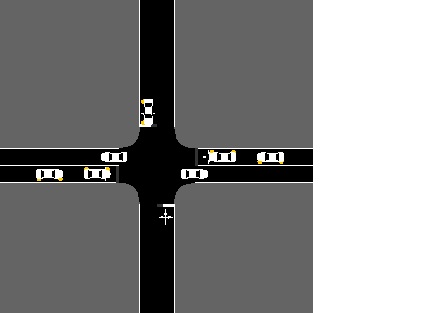
In this project, a unified interface was developed for running transportation simulations in a variety of simulators. Since each simulator has a different input and output structure, the goal of the project was to allow the user to enter simulation data uniformly for all simulators and receive the simulation results in a uniform format. The interface that was developed allows the data to be received, adapted to the format required by the selected simulator, run the simulation, and receive its results in a uniform format. The project focused on creating a unified interface for creating a simple intersection and a road that merges into a main road with a merging lane in the SUMO simulator.
To this end, Flow was used, an open-source tool that enables a uniform definition of traffic simulations and provides an integrative interface for the Simulation of Urban MObility (SUMO) and Aimsun simulators. Flow allows the creation of diverse traffic scenarios based on predefined templates, while simplifying the process of defining different traffic networks and configurations.
Using Flow, the required networks were built, a simple intersection and a merge with a merging lane, which have parameters the user can set such as road lengths, number of lanes and maximum speed.
In addition, an independent initial interface independent of Flow was developed, which allows the creation of basic networks suitable for the SUMO simulator, which can be continued and expanded to other simulators and networks. This interface supports the creation of simulations of basic networks that include a simple road, a road with an intersection and a T-junction, which have parameters that the user can set such as road lengths, number of lanes, cars per hour and traffic light timing.

